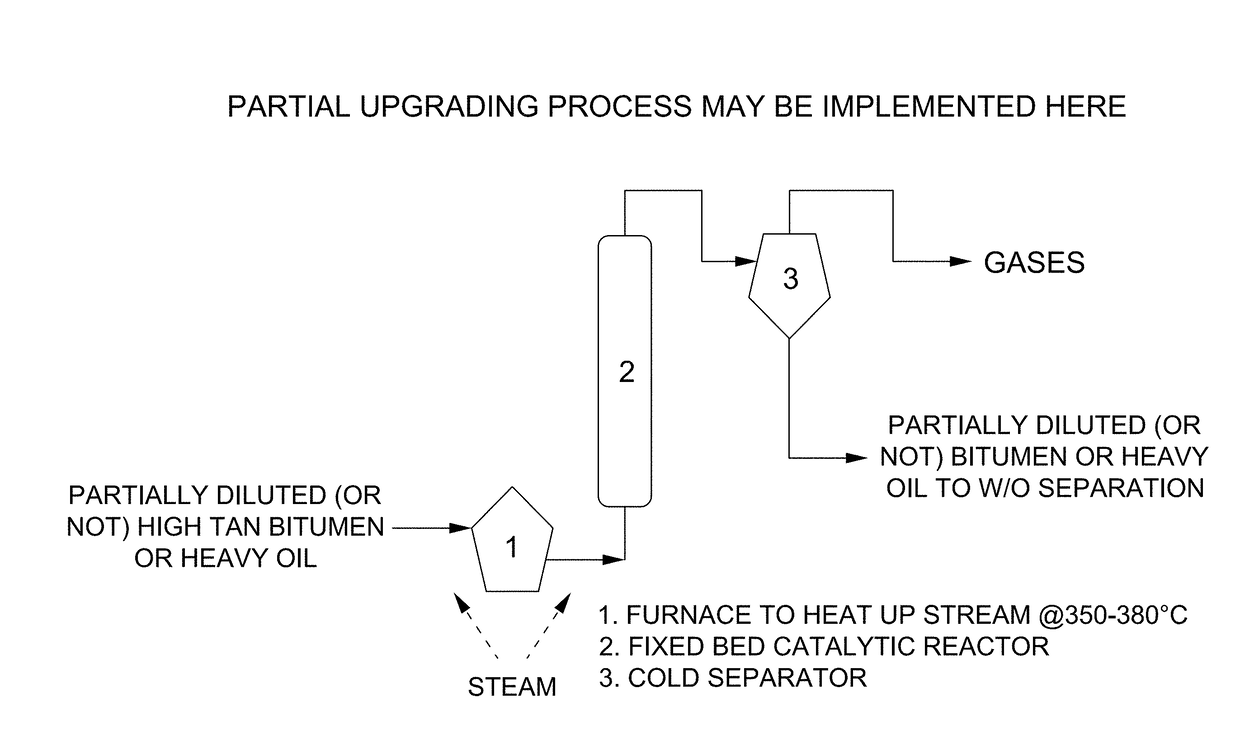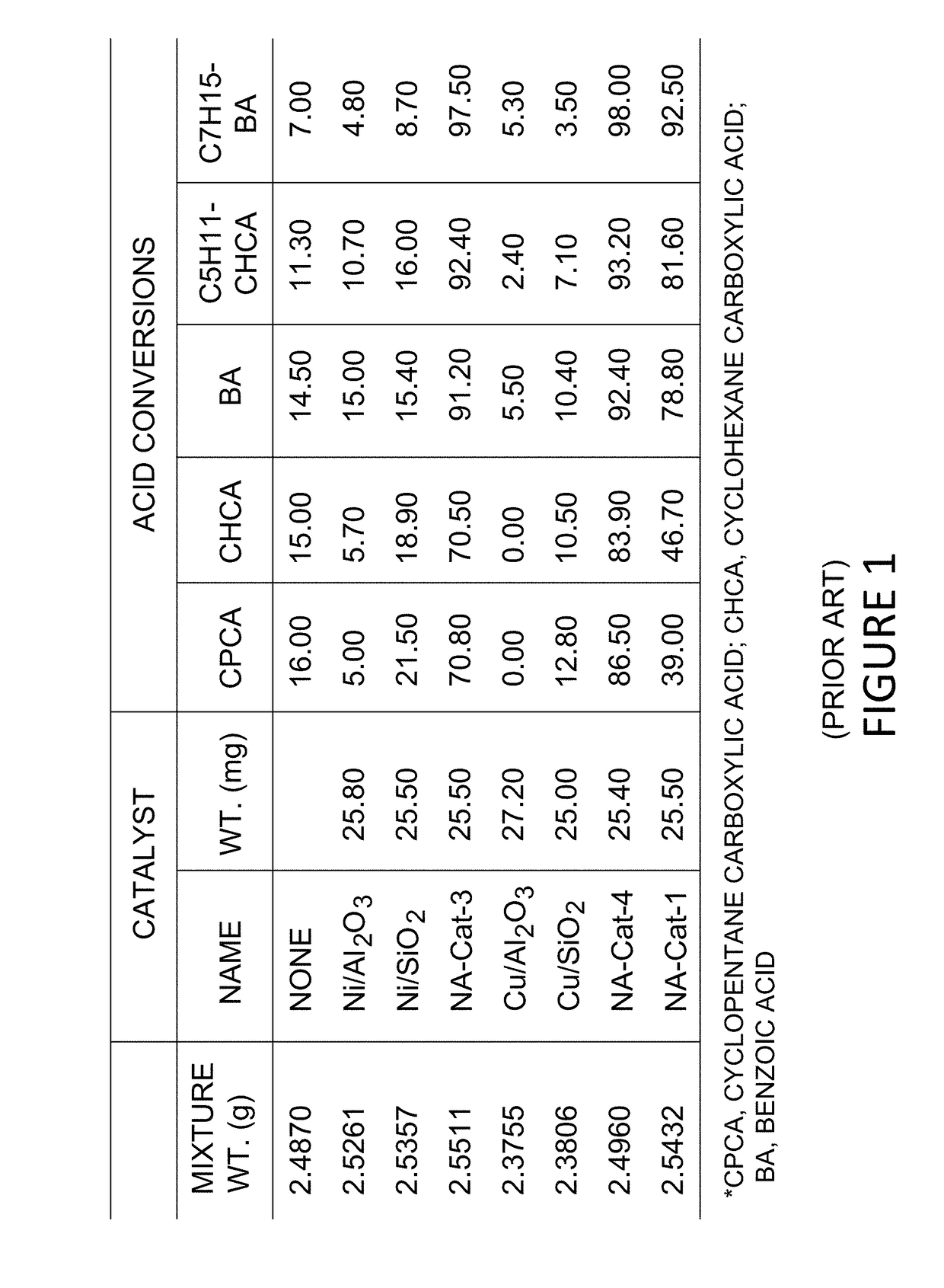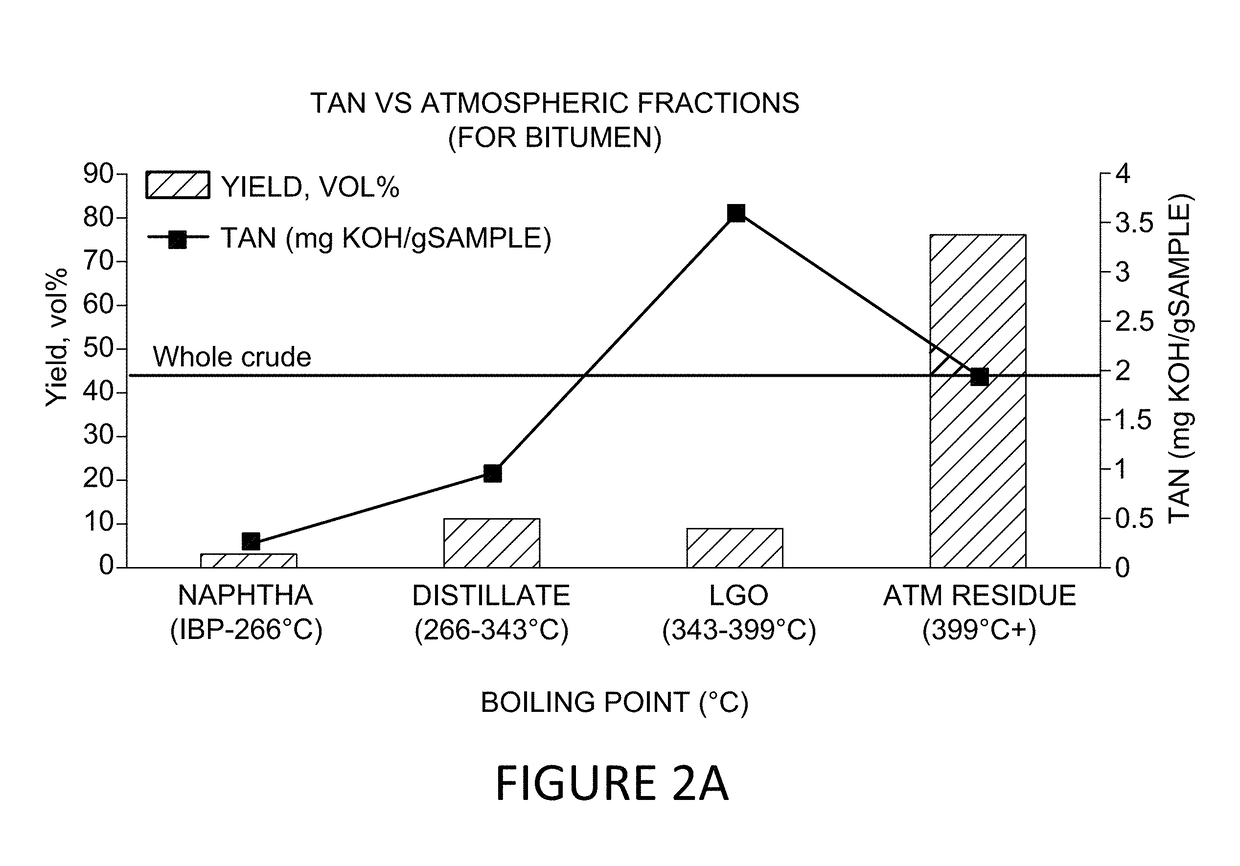Metallo-silicate catalyst (MSC) compositions, methods of preparation and methods of use in partial upgrading of hydrocarbon feedstocks
a metallosilicate catalyst and composition technology, applied in the field of microand/or meso) metallosilicate catalyst (msc) compositions, can solve the problems of catalyst poisoning, adversely affecting the reliability and operation of refineries, and damage to production, transportation and processing equipmen
- Summary
- Abstract
- Description
- Claims
- Application Information
AI Technical Summary
Benefits of technology
Problems solved by technology
Method used
Image
Examples
example 1
TAN Reduction Testing with a VGO Feedstock (Initial TAN of 4.2 mg KOH / g)
[0213]FIG. 7 shows schematics of the unit used for the catalytic testing with a VGO feedstock (initial TAN of 4.2 mg KOH / g). FIG. 8 shows a schematic representation of the micro-pilot plant used for dilbit TAN reduction testing.
[0214]Tables 1 and 2 below show results of VGO TAN reduction testing at 400° C. and 360° C. reaction temperatures, respectively, and show the effect of temperature on TAN reduction without catalysts (increasing temperature causes some reduction of TAN). TAN of the original VGO was 4.2 mg KOH / g. From this screening, catalyst C (3% Ce, 2% Ni, meso-porous zeolite framework; TAN of 0.94 achieved) and catalyst D (3% Ce, 3% Ni, meso-porous zeolite framework; TAN of 1.16 achieved) showed the highest reduction of TAN from the tested set of catalysts.
[0215]FIG. 9 shows simulated distillation of the runs carried out with VGO.
TABLE 1Catalyst screening with micro-pilot plant unit using VGOfeedstock (...
example 2
l Characterization of Dilbit Samples, and Thermal Effect of Physical Distillation on TAN
[0216]Diluent was distilled from dilbit (diluted bitumen samples) and the remaining oil was blended in preparation for catalytic testing.
example 3
n of Catalytic TAN Reduction with Thermal TAN Reduction
[0217]Results provided herein demonstrate successful hydrocarbon partial upgrading catalyst formulations screened using a micro-pilot plant unit. Embodiments based on the use of a catalyst and steam to reduce TAN (i.e., by decarboxylating acid (for example, naphthenic acid)) of a vacuum gas oil fraction (343° C.+) chosen as a preliminary feedstock are shown. The catalysts and technology provided herein may, in some embodiments, be used as an alternative to the use of adsorbents and hydroprocessing. Results suggest that these approaches may be suitable for potential scale-up.
[0218]A fixed bed catalytic pilot plant was used for a continued 10 week test of the best catalyst formulations previously identified. For these tests, VGO was used as feedstock and T=400° C., P=40 psi and SV=1 h−1 were used as reaction conditions. It may be clearly observed that the catalytic behavior of catalysts C and D showed higher reduction of the TAN v...
PUM
| Property | Measurement | Unit |
|---|---|---|
| molecular diameter | aaaaa | aaaaa |
| pore sizes | aaaaa | aaaaa |
| pore sizes | aaaaa | aaaaa |
Abstract
Description
Claims
Application Information
 Login to View More
Login to View More - R&D
- Intellectual Property
- Life Sciences
- Materials
- Tech Scout
- Unparalleled Data Quality
- Higher Quality Content
- 60% Fewer Hallucinations
Browse by: Latest US Patents, China's latest patents, Technical Efficacy Thesaurus, Application Domain, Technology Topic, Popular Technical Reports.
© 2025 PatSnap. All rights reserved.Legal|Privacy policy|Modern Slavery Act Transparency Statement|Sitemap|About US| Contact US: help@patsnap.com



